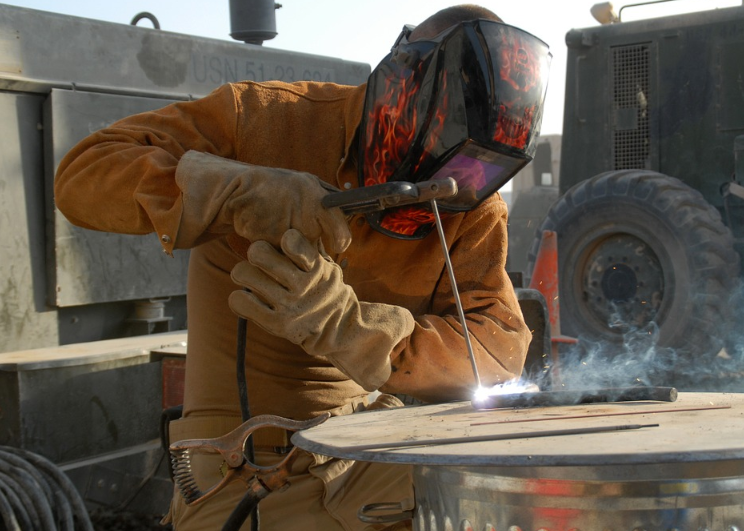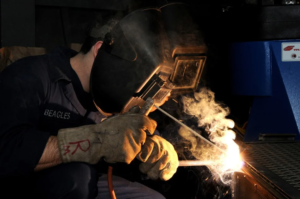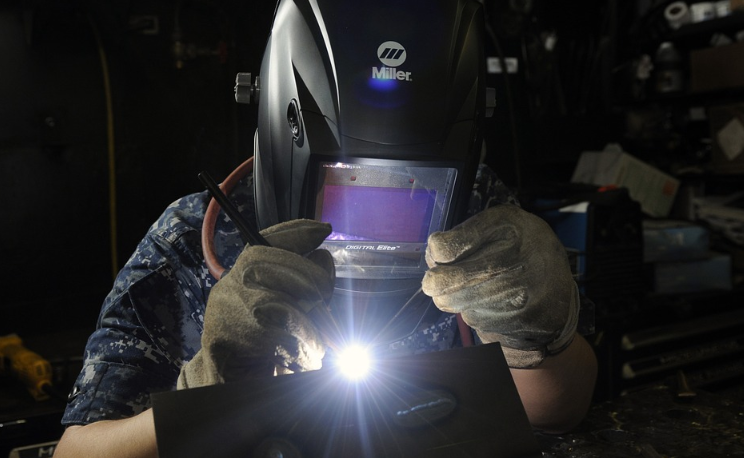Six Types of Welding Techniques
Welding is one of the most complex fabrication processes that require precision and techniques. By using high-heat, welders combine several metal parts into one part by precisely melting the parts. Welding is used in industrial activity and in the open air, underwater, and even in outer space. Although welding is beneficial in many conditions, it is also extremely hazardous. Burns, electric shock, and intense ultraviolet radiation are the dangers that can attack unprotected welders. Therefore, welding safety is a must. If you want to learn more about welding, I explained the six types of welding techniques below.

Stick Welding
Stick welding is often referred to as arc welding, but this is a sort of improper term because TIG and MIG welding were arc welding processes as well. This technique requires a stick electrode around 6013, 6011, and 7018. The rod is struck like a match so that the arc is brought into the welding bath together with the rod while it burns. Stick welding is simple, and even the rod welding machine is simple and quite cheap. A Lincoln 225 AC welding machine can likely be purchased in almost any warehouse for less than $300.
MIG Welding
MIG welding is one of the simplest types of welding to learn. The reason is that the welding wire does not need to be fed because it is shortened, as in bar welding. A wire is pulled away from the end of the MIG welding gun, and all the operator has to do is pull the trigger and then weld. Sounds simple, doesn’t it? Well, it’s not exactly easy. It is a little easier to learn than welding with the barrel, but just a little. There are two types of MIG Welding techniques. They are Bare Wire MIG and Flux Core Welding
Instead of Flux Core Welding, Bare Wire MIG is cleaner and works to weld thinner metal. On the other hand, Flux Core Welding is usually used for low-cost amateur welders. The buyer doesn’t want to spend money on gas and a gas conversion kit, or for really heavy-duty applications like heavy production welding and construction equipment.
TIG Welding
TIG welding is considered one of the hardest types of welding to master. The reason is it needs both hands to weld with this technique. Your right-hand needs to hold a TIG torch, which provides the arc and the heat, while the other hand packs the rod. TIG welding equipment is generally more expensive and more difficult to install. There is often a remote-controlled amperage pedal, which also requires a cylinder of shielding argon gas or argon mixture to do the job. TIG welding is the most flexible type of welding available. Virtually all standard metals can be welded with the TIG welding process.
Plasma Arc Welding
 Compared to TIG welding, Plasma Arc Welding generates the electrode to shine in a nozzle, and the heat is generated by the ionizing gases flowing on the arc. High precision and the recessed electrode is required in this technique. This technique is usually practiced in aerospace applications such as dimensional restoration of air seals and jet engine blades, usually in single digit amperages and below 015” thickness.
Compared to TIG welding, Plasma Arc Welding generates the electrode to shine in a nozzle, and the heat is generated by the ionizing gases flowing on the arc. High precision and the recessed electrode is required in this technique. This technique is usually practiced in aerospace applications such as dimensional restoration of air seals and jet engine blades, usually in single digit amperages and below 015” thickness.
Gas Welding
Gas welding is a rather old-fashioned technique. Oxygen and acetylene have easily become the hottest rate to get a gas welding garment. Gas welding can be used at a fantastic price for automotive exhaust applications, along with self-built aircraft enthusiasts weld the 4130 chromolic tubes for aircraft fuselages. It works. It is portable. And it is very versatile. There are still people who swear on gas welding for aluminum. Some now believe that tiger welding is a ton better than gas welding. I am one of those people.
Electron Beam and Laser Welding
These welds are considered a high-energy welding process because they allow the heat to flow much better than old conventional welds. Electron beam welding …







